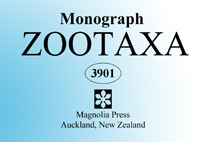Abstract
Four new species of Centroderes are described from the Northwest Atlantic Ocean based on light microscopical observations of 153 adult and 26 juvenile specimens and on SEM investigations of 54 adult and 3 juvenile specimens. Centroderes barbanigra n. sp. and C. bonnyae n. sp. can be distinguished from all other species by the existence of a short lateroventral tube on segment 7. The latter species can be separated from the former by an acicular spine in the lateral accessory position on segment 8. The female of both C. readae n. sp. and C. spinosus possesses a female-specific, modified gland cell outlet on segments 7−9, but such an outlet is missing on segment 7 of all other species. The latter species is distinguished from the former by its robust lateroventral spine on segment 8 and by its lack of a laterodorsal sensory spot on segment 4, whereas the former species shows a midlateral sensory spot on segment 8. Centroderes drakei n. sp. agrees with the remaining American species in the possession of a laterodorsal sensory spot on segment 4; the former species can be distinguished from C. readae n. sp. by the lack of a sensory spot sublaterally on segment 1 and midlaterally on segment 8 as well as by the lack of a female-specific, modified gland cell outlet on segment 7; C. drakei n. sp. can be separated from C. barbanigra n. sp. and C. bonnyae n. sp. by its lack of a lateroventral tube on segment 7.
We report anomalies rarely noticed for Kinorhyncha, such as different developmental artifacts in several specimens and a potential tumour in one individual. Evidence is provided that species of Centroderes develop via at least two adult life history stages, but three or more adult stages exist in C. drakei n. sp.; this represents the first record of a more complicated life cycle in Kinorhyncha. This paper also contains the first report of spermatophores in cyclorhagid Kinorhyncha and in both female and male specimens. In addition, characters in the ground pattern of Centroderes are summarized.

